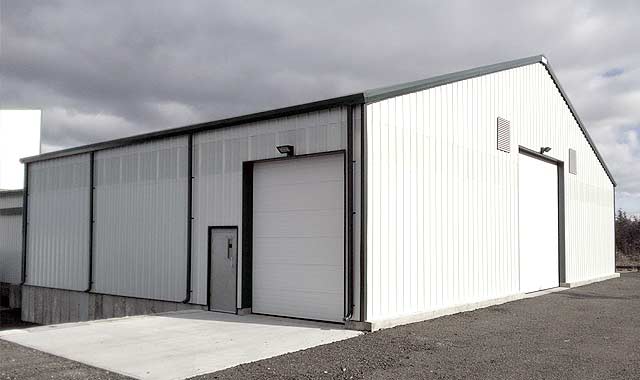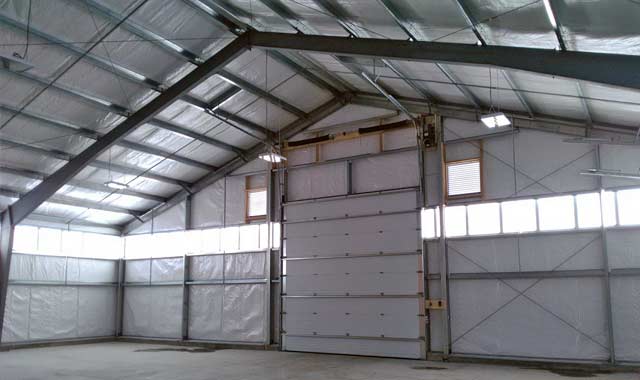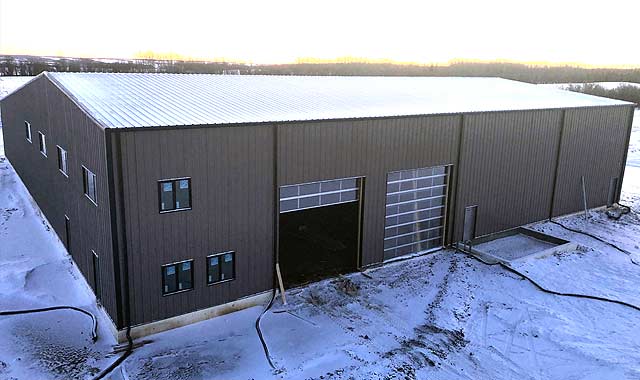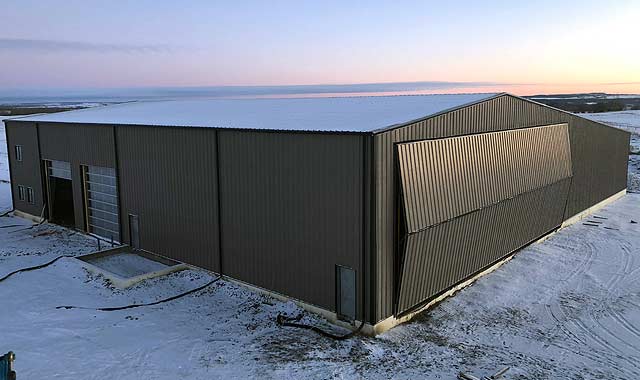Northumberland Grain Warehouse


Northumberland Grain’s Warehouse extension was the second building complete by Barrett’s Farm and Family Centre. George Zakhem and Richard Barrett worked together on this project to ensure the detailing and the transition between the new building and the older portion of the warehouse was seamless. Northumberland Grain is very happy with the install and very impressed with the added translucent panels and abundant interior light.
Maintenance
One of the benefits that comes with choosing a steel building is that when compared with wood structures, steel is very low-maintenance. In fact, steel buildings are often said to be maintenance-free. Wood requires sealing and repainting every year because wood walls and roofs are highly susceptible to wear and tear from weather, wind, moisture and pests. Wood will rot, crack and leak, and without regular maintenance, can require costly repairs and replacements. On the other hand, steel is durable enough to retain its performance and its aesthetic appeal will very little maintenance required. The paint on a steel building can last more than three decades, so you won’t need to add a fresh coat every year like you would with a wood structure. Weather and wind have little to no effect on steel. Moisture issues are less likely because leaks don’t occur without the rot and cracking that wood buildings experience. Pests aren’t an issue without wood to infest. Steel roofing doesn’t require shingle replacements and doesn’t wear down as easily from the weight of snow and ice. Steel is just a more durable material than wood, so you’ll save time and money not having to constantly deal with upkeep. Plus, steel buildings come with warranties that cover roof panels, silicone-polyester coatings, girts, purlins, C-sections, fasteners, frames and I-beam construction. This doesn’t mean you should neglect your building entirely, but it does mean that you can rest assured that following just a few simple upkeep steps will help you keep your building in excellent condition for a long time. Note that maintenance frequency will vary by geography, as some areas will experience more storms, humidity, snow or pollution. In most cases, an inspection at the end of fall and start of spring, as well as following any instances of inclement weather, will suffice to keep your steel building in great shape.
For any new structure, make sure to clean up after installation. Be sure no loose screws or scraps of metal are left lying around, as they can scratch and damage surfaces. Over time, occasionally check for loose screws and tighten them. Use a pressure washer to spray leaves, dirt and dust from exterior surfaces and overhead doors. Steel isn’t likely to corrode from weather effects like these, but an occasional wash can still help, if only to retain the aesthetics of a brand new building. Remove debris from gutters to avoid issues with blockages and downspout backups. Standing water can begin to corrode and rust metal. After the first rain on a new structure, walk the perimeter of your building and check how water is draining. Adjust drainage for any pooling you find occurring. A careful sweeping of debris from the roof can also be beneficial, so long as you do so safely and cautiously. The same goes for snow and ice in the winter, for which you can use a specially designed snow rake to reduce the load on the roof before it becomes too heavy. Be sure to check seals and weather stripping on doors and windows, lubricating tracks as it is necessary. Once a year, check insulation for moisture and damage and replace as necessary to avoid mold and loss of temperature control.
For any questions about maintaining your steel structure, call and talk to our experts at 1-888-449-7756.
Aircraft Hangar for Fort St. John, BC


This personal hangar is one of many erected in the past few years connecting northern BC to Yukon and the North West Territories. This particular hangar has an offset peak with an 80′ full partition wall. The building is heavily insulated in the 80′ x 125′ section and measures 140 feet in width and 125 feet in length. A 12′ x 20′ boiler room was included off the northwest corner and the bifold door measures 70′ x 20′. Tim Mielke and the crew from TDM General Contracting were responsible for erecting another successful superstructure for Olympia. Designed by Chief Estimator George Zakhem with the help of the good folks at Prophet Muskwa Outfitters.
